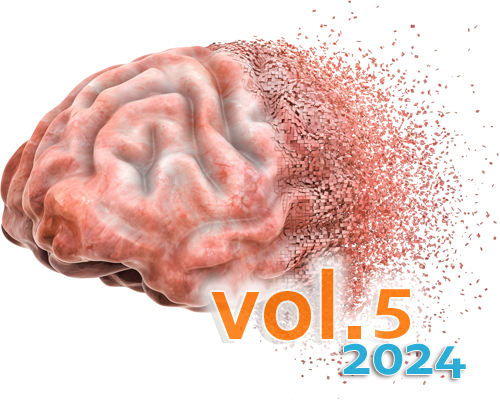Adult glioblastoma with Lynch syndrome-associated mismatch repair deficiency forms a distinct high-risk molecular subgroup
DOI:
https://doi.org/10.17879/freeneuropathology-2024-5892Keywords:
Glioblastoma, MMR deficiency, Lynch syndrome, TP53, PIK3CA, Chromatin remodeling genes, Multinucleated giant cells, p53 immunohistochemistry, Immune checkpoint inhibitors, Ipilimumab, NivolumabAbstract
Glioblastoma is the most frequent and malignant primary brain tumor. Although the survival is generally dismal for glioblastoma patients, risk stratification and the identification of high-risk subgroups is important for prompt and aggressive management. The G1–G7 molecular subgroup classification based on the MAPK pathway activa-tion has offered for the first time a non-redundant, all-inclusive classification of adult glioblastoma. Five patients from the large, 218-patient, prospective cohort showed germline mutations in mismatch repair (MMR) genes (Lynch syndrome) and a significantly worse median survival of 3.25 months post-surgery than those from the G1/EGFR and G3/NF1 major subgroups, or from the rest of the cohort adjusted for age. These rare tumors were assigned to a new subgroup, G3/MMR, a G3/NF1 subgroup spin-off, as they generally show genomic alterations leading to RAS activation, such as NF1 and PTPN11 mutations. An integrated clinical, histologic and molecular analysis of the G3/MMR tumors showed distinct characteristics as compared to other glioblastomas, including those with iatrogenic high tumor mutation burden (TMB), warranting a separate subgroup. Prior history of cancer, midline location or multifocality, presence of multinucleated giant cells (MGCs), positive p53 and MMR immunohistochemistry, and specific molecular characteristics, including high TMB, MSH2/MSH6 alterations, biallelic T53 Arg mutations and co-occurring PIK3CA p.R88Q and PTEN alterations, alert to this high-risk G3/MMR subgroup. The MGCs and p53 immunohistochemistry analysis in G1–G7 subgroups showed that one in 7 tumors with these characteristics is a G3/MMR glioblastoma. The FDA-approved first-line therapy for many advanced solid tumors consists of nivolumab-ipilimumab immune checkpoint inhibitors. One G3/MMR patient received this regimen and survived much longer than the rest, setting a proof-of-principle example for the treatment of these very aggressive G3/MMR glioblastomas.
Metrics
Additional Files
Published
How to Cite
Issue
Section
License
Copyright (c) 2024 Maria-Magdalena Georgescu

This work is licensed under a Creative Commons Attribution 4.0 International License.
Papers are published open access under the Creative Commons BY 4.0 license. This license lets others distribute, remix, adapt, and build upon your work, even commercially, as long as they credit you for the original creation. Data included in the article are made available under the CC0 1.0 Public Domain Dedication waiver, unless otherwise stated, meaning that all copyrights are waived.



















